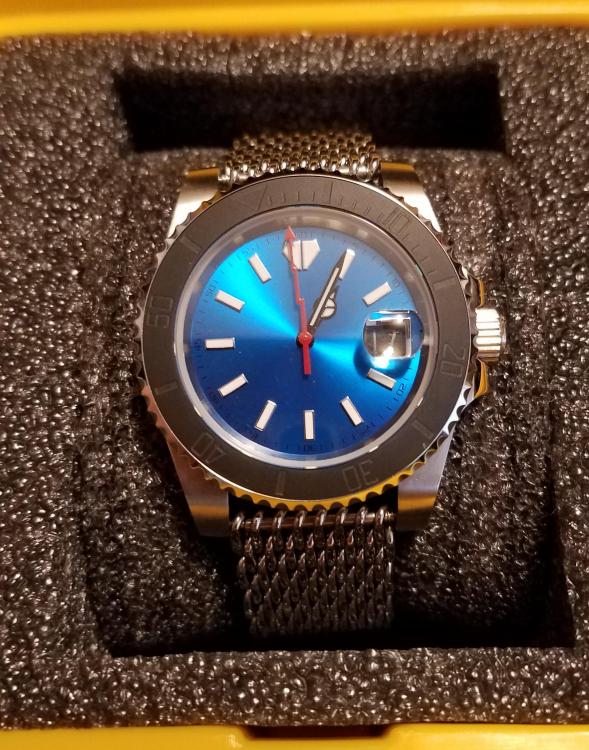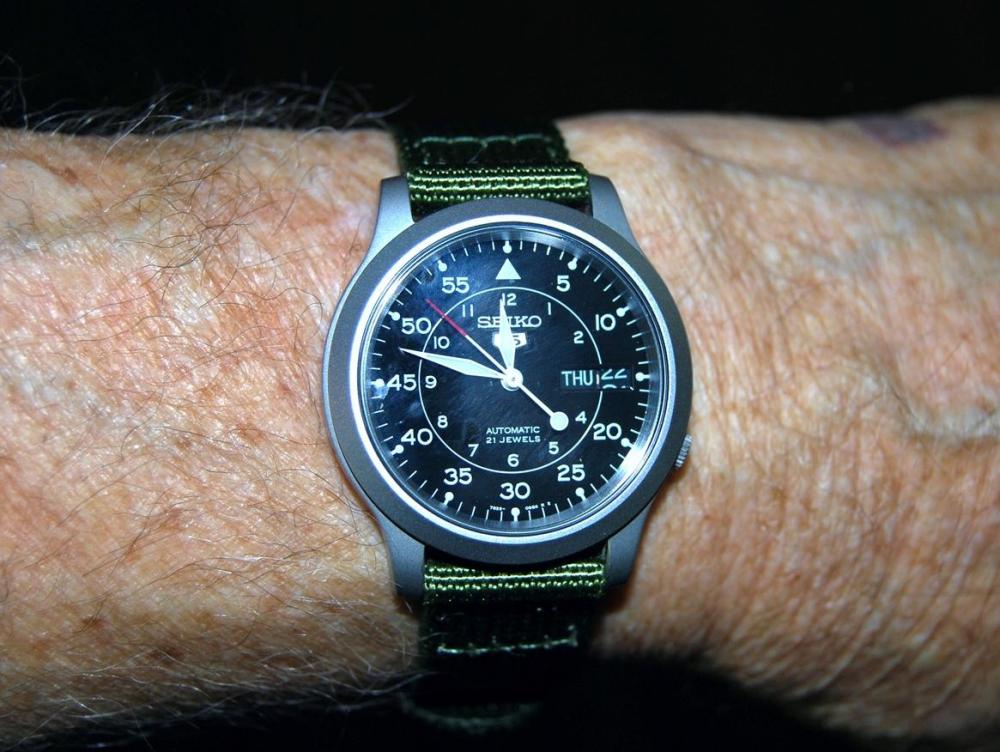Leaderboard
Popular Content
Showing content with the highest reputation on 03/21/19 in all areas
-
VW i have read your other thread and it seems this has been an issue for you for quite some time. Other members have commented on using microscopes for lathe work which could be an option later down the road if you decide to get into lathe work too. Here is my stereo microscope setup for mother board work and i can work under it for hrs at a time with no eye strain. You can see the makeshift stand that i made for it,which was only intended to be temporary untill i purchased a boom stand but never did. I can zoom out of work to get a full view of a movement and also zoom in to see jewel holes too. The working clearance is about 6- 8in so there is no issue getting tools under it to do work. I payed $100 for the scope 2nd hand from ebay and an extra $40 for the widefield x10 barlow to get away with it on the cheap. Alternatively (AM scope) have awesome gear used in the micro solder work industry which you could have a look at if you are interested. Attached is pics of my gheto setup boom stand and the zoom range of the scope at that hight. Sent from my SM-G950F using Tapatalk2 points
-
Funny you should say that. I was on a watch factory tour and one of the companies held a master class in watchmaking for us. The guy next to me had been a brain surgeon and he was losing screws left and right. He turned to me and said, “I’m sure glad my former patients aren’t watching me do this. I’m not at home just now so I’ll let you know what happens.2 points
-
I don't wear glasses but I'll add that I use a 3x loupe (right eye, right handed) for general bench work, and use a zoom microscope for inspection and oiling. Around here the glasses wearers tend to take them off and use a conventional loupe but that may be due to their particular eyesight. I know others who use the clip on loupes and are happy. For general work anywhere between 2.5x and 4x is ok. Going above, even 5x, can be very tiring for the eye. The high power loups are more for inspection use or short duration. For lathe work I have a scope mounted over it that gives 10x or 20x. 10 for most stuff, 20 for really fine work.2 points
-
After I watched a couple of Mark Lovicks videos on making a watch with parts sourced on eBay I figured I'd give it a try. I made two. This is my favorite. It's a divers watch with an eta 2824-2 movement. I'm quite proud of it. I picked up an H link shark mesh bracelet. I'm calling it the deep blue desk diver. Lol1 point
-
Congrats JD, also subbed to your channel lots of informative and great vids there ty.1 point
-
I like the way you think! I'm looking for an Omega now, and I like the Speedmaster Broad Arrow reissue with the plexi and caliber 1861. J1 point
-
Today's choice is actually a fairly recent vintage. I purchased it from an acquaintance that just didn't care for it any longer. He stated that it was also inaccurate, losing several minutes/day. After some good spirited haggling, I bought it for $25. I replaced the original nylon band with a new one that I had on hand. Mine is an 18mm zulu style with matte finished stainless hardware to match the case. My photo shows it in the process of changing the date at 11:45 pm. It didn't finish rolling over the day disc until 03:00, which is about normal for this movement. The watch is powered by the Seiko 7S26c movement and after wearing it and leaving it on the nightstand both dial up and dial down over consecutive nights, it is +4 seconds from when I set it a week ago. I have no idea what he was referring to regarding accuracy as this is well within mfgr's specs. It has the display style back but nothing fancy to see there. The original strap had a leather insert where the holes are punched and it had dry rotted. My total outlay so far is $31 USD. It's a nice little package with the matte finish stainless case. It won't be quite so prone to showing scratches as I intend this to be my daily wearer when mowing or working in my yard.1 point
-
Today, I'm sporting a 25 jewel automatic "Suizo", which I would estimate is from the late fifties. It is going well, but I had to pop a little thread lock in the crown as it kept undoing itself. It had a fairly lengthy crystal polishing session, but there are still a couple of deep scratches remaining, so I may replace that. I resisted the urge to clean the dial, as it looks a little delicate. Maybe if I replace the crystal I might be tempted to revisit that idea. It was on a rather dilapidated "depilatory band", which may once have been roughly golden in colour, but I think it looks a whole lot more refined on a simple brown leather strap. It arrived with the usual layers of grime, both internal and external, but is now shining like a new pin and ticking away nicely.1 point
-
You're working your way through ALL the chronographs?!? Man, I wish I had time to even do the top three. My experience thus far is limited to 7750 and one Landeron cal 2. I'm looking for a birthday year watch and was leaning towards valjoux 7733 or Omega's lemania-derived 861-1863. Thoughts? J1 point
-
Benzine won't melt the shellac. Alcohol will, but even that needs some time.1 point
-
Lol i could only imagine mate, im not sure if im going to go that deep in the rabbit hole just yet [emoji1787] sorry for high jacking OP & taking this a bit off topic too. Sent from my SM-G950F using Tapatalk1 point
-
Thanks- I'm sure one will show up in time. ;o) Yes, the movements are in-house column wheel chronographs; you might know I'm trying to work my way through all of the manual chronographs of the golden age! They're quite nice though- they do look better in person but feel better than any other watch I've had thus far. Movado made some keepers back in the day.1 point
-
I'm sorry I don't have any leads on your request Ry. Are these column chronos an in-house? The movements are beautiful. J1 point
-
No, other chronograph movements use a different method, usually most of the chronograph movements can be adjusted by pulling the crown to time setting position then keep pressing the start-stop button till you get the second hand to zero position Sent from my iPhone using Tapatalk1 point
-
I might be able to let one go. I just got carried away buying them. Sent from my iPhone using Tapatalk Pro1 point
-
I do have a few lathes. Sent from my iPhone using Tapatalk Pro1 point
-
I just use a square file in my Lathe to make sure a have a square cut on the stem Sent from my iPhone using Tapatalk Pro1 point
-
Outstanding .You just took a practical look at it, rubbed your brain cells together and came up with a plan. I use synthetic motor oil as well. It is perhaps "improper"but it does work.I often wonder if "watch oil"isn't just mobil 1.1 point
-
welcome to the forum! some automatic watch main spring can be wound by the crown also. this means you can take the counter weight out and wear the watch - or don't buy automatic watches -go- to quarts watches. as a hobby, you could build a " automatic watch winder" for less than $700 ? in any event, enjoy the forum and; Gods speed ! vin1 point
-
Hi Chip welcome to the nuthouse all watch and clock enthusiasts here. well done on the repair you are on your way, you will acquire more watches and more tools. welcome1 point
-
It's about 99.99% not a mainspring issue. It should limp along with a 5x weaker spring- poorly but running. Is the train free with the balance and fork out? Like two clicks of wind, train should run and escape wheel should turn backwards at least a little at the end. With just a few clicks of wind the fork should snap back and forth cleanly. With fork out and balance in, balance should oscillate freely and for quite some seconds with a swift twist of the movement. If these things aren't happening then start checking methodically. Going back to the barrel- it could be an issue: when you assemble it you should hold the assembled barrel between stout tweezers on the ends of the arbor and check for endshake. Make sure the cap is fully seated. Make sure the holes in the plate aren't too worn (often an issue with seiko). But even if all that was wonky it should 'run', at least poorly, with a couple of turns of wind.1 point
-
I spent a tense hour watching this guy's video for the process. I have to admit, while he goes about it in the wrong way many times, he would be me if I talked to myself while working. His frustration is familiar. RMD < Clearly, editing is too much trouble for him!:;)>1 point






